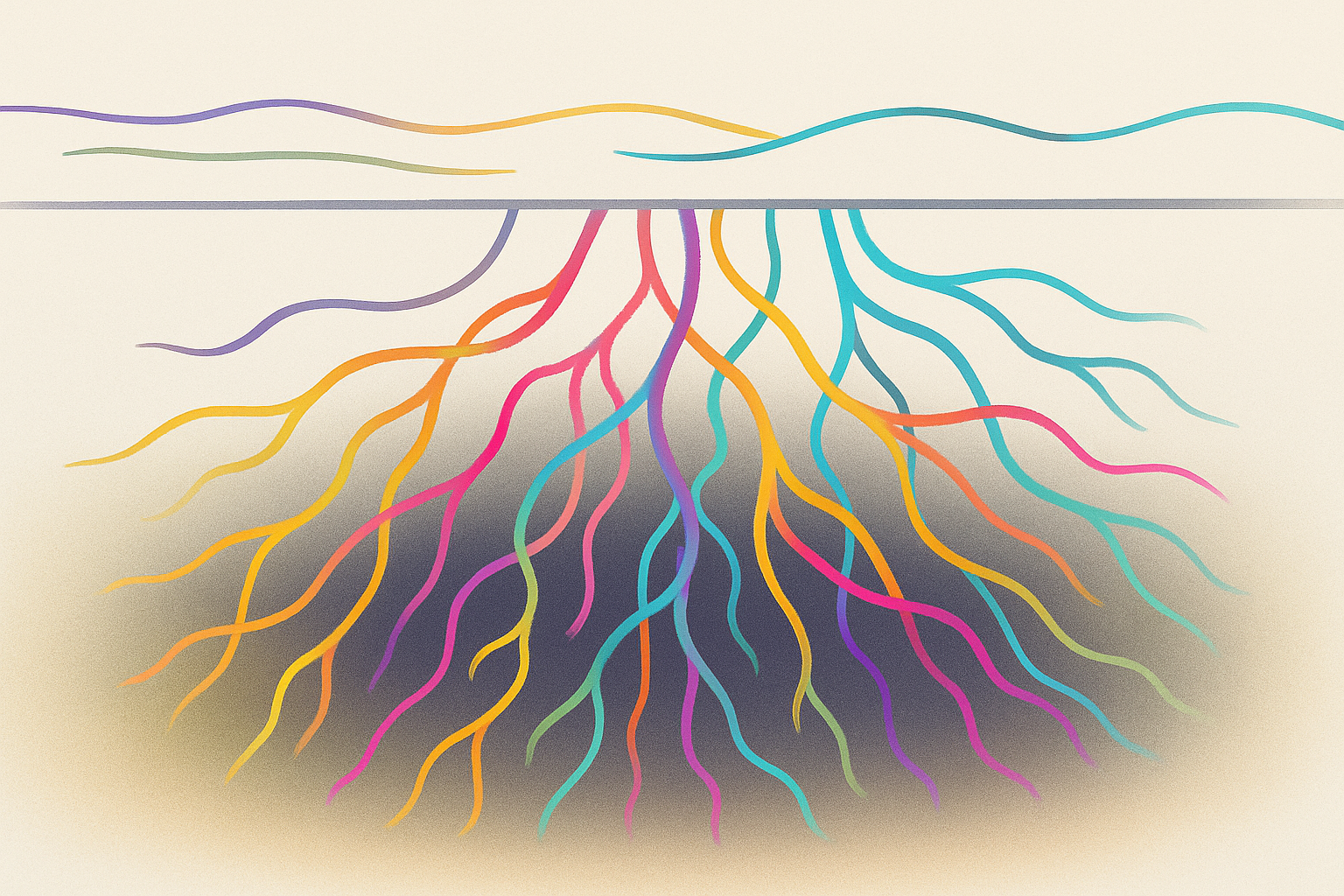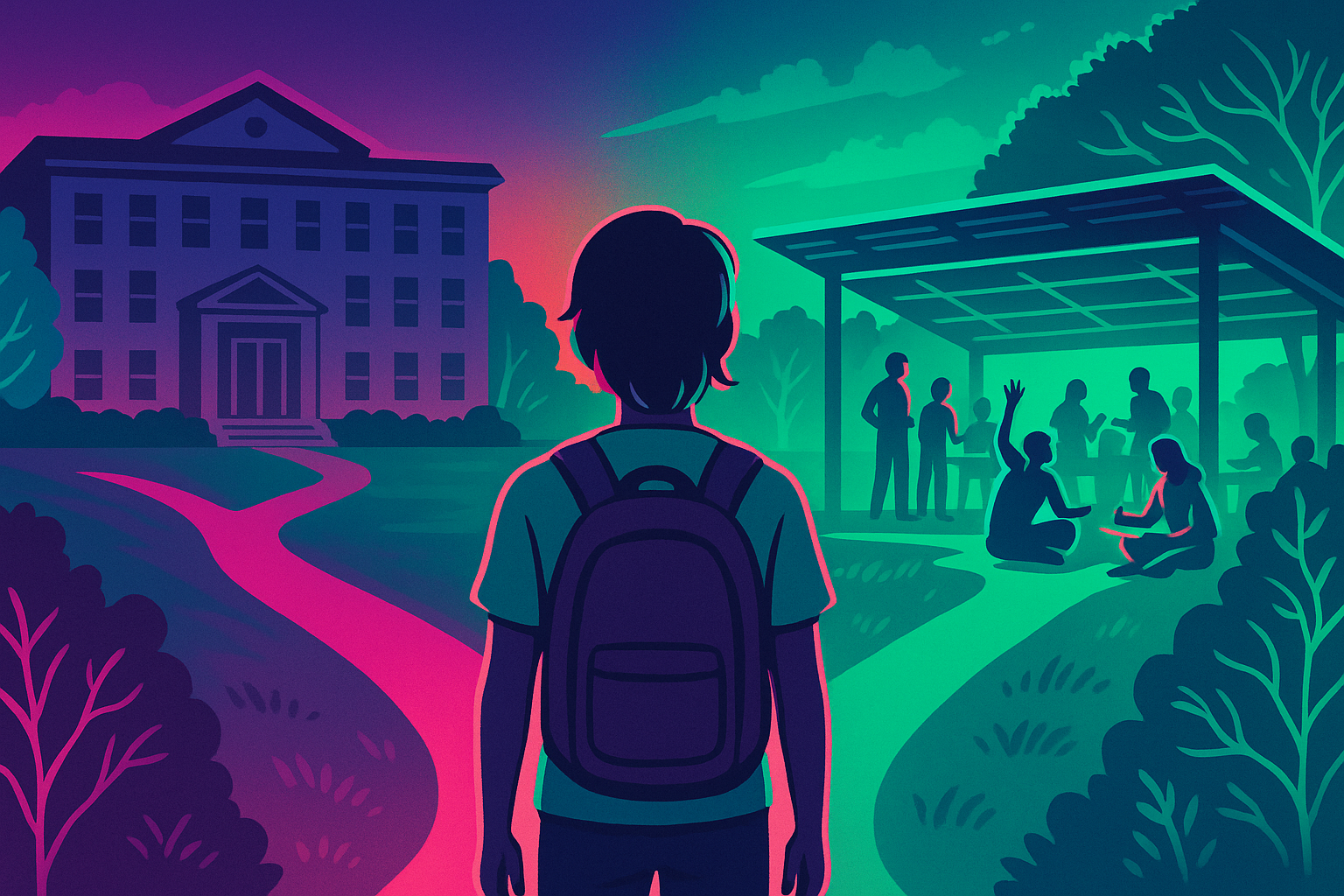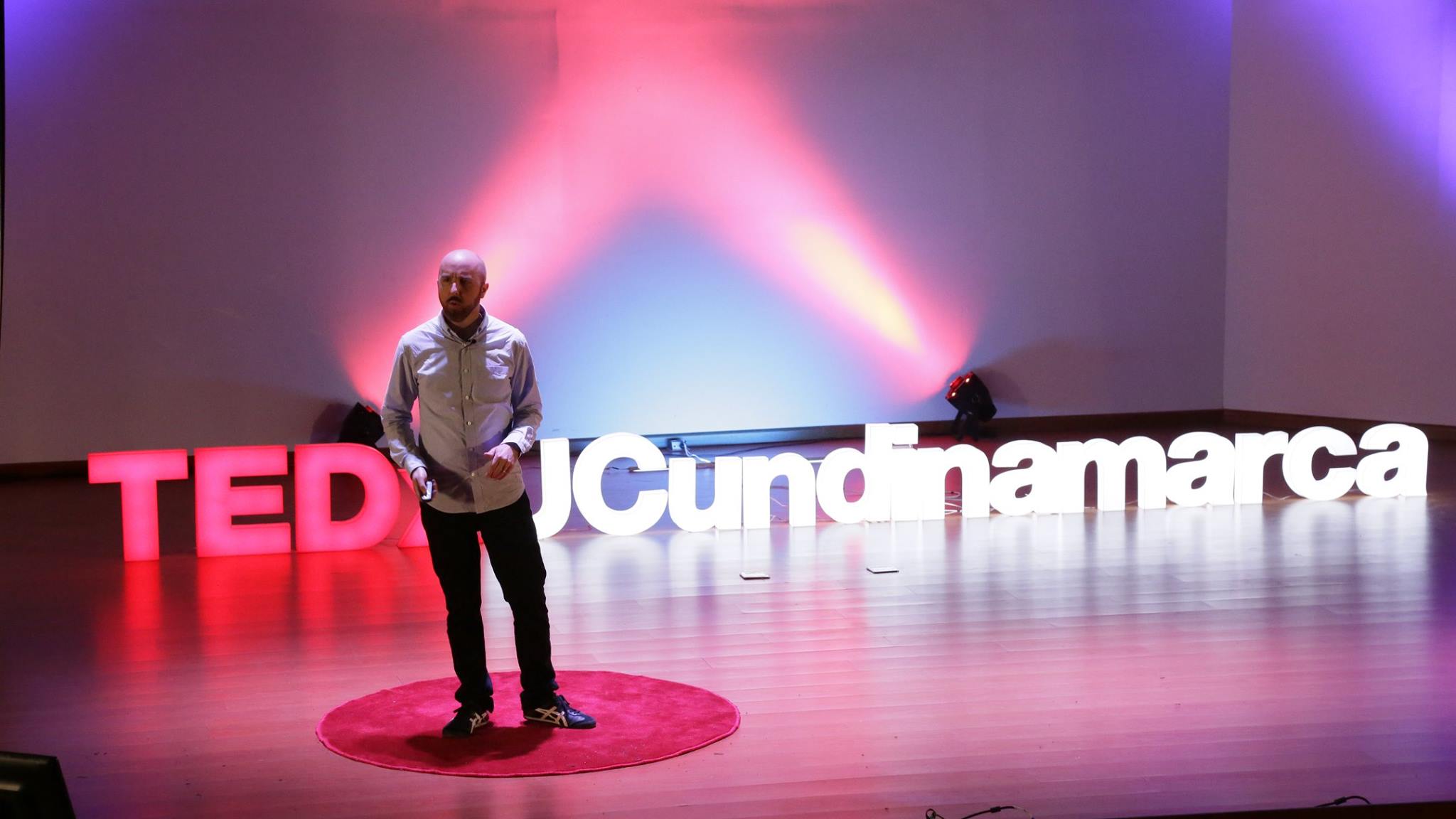
 John Moravec
John MoravecInvisible learning is an organic process: Breathing, taking root, and becoming one’s self
Most learning unfolds as an organic process: quiet, continual, and often unseen. Like breath or the silent growth of roots, it extends beneath the surface of formal schooling, leaving little trace on a transcript. It happens when a child instinctively figures out how to balance blocks, when a gamer meticulously tweaks code to level-up a mod, or when a retiree joyfully swaps languages with a neighbor for the sheer pleasure of connection. These moments, constant and largely unseen by formal systems, underscore a profound truth: humans learn throughout life, whether that learning is visible or not.
Consider this vignette: At school, Aarya seems quiet, sometimes distracted. She struggles with spelling drills and is often told to focus harder. What her teachers do not see is what happens after school, when Aarya spends hours sketching animals from nature documentaries and inventing stories around them. She experiments with different drawing styles, researches animal habitats online, and keeps a worn notebook full of ideas for imaginary worlds. If her school logged the creative exploration she masters nightly, Aarya would already meet half the outcomes on this year’s curriculum map.
In doing this, she develops roots of understanding (observation, narrative thinking, attention to detail, and an intuitive sense of ecosystems and relationships) nourished not by assignments, but by immersion and self-direction. This is all without a curriculum, assignments, or grades. None of it appears in her school record. But it is real learning: self-directed, deeply formative, and sustained by passion for the activity.
When a system refuses to see learning beyond narrow definitions, it loses more than a data point. It loses imagination, capacity, and connection. Treating learning as something to manage rather than something to trust diminishes its power. In the rush to control growth, we strip learning of its authenticity. True education trusts learning as an organic process, emerging naturally, rooting deeply, and evolving over time, instead of forcing it into visibility.
From Manifesto 25:
Learning happens if we attend to it or not. Most learning is “invisible”—it occurs outside formal instruction through informal, serendipitous experiences. It happens through curiosity, experimentation, and unplanned experiences; more like breathing than deliberate effort. Rather than forcing invisible learning into visibility, we should focus on creating environments that trust and nurture its organic flow. This means nurturing workplaces, schools, and communities that value exploration, provide opportunities to seek knowledge, and respect that not all learning needs to be measured or reported. By allowing learning to remain unseen, we preserve its authenticity and permit individuals to grow in ways that are meaningful to them. Trust, not surveillance, is the true driver of innovation and growth.
Learning will keep happening with or without our permission; the question is whether our systems amplify it or suffocate it.
Invisible learning refers to this continuous, often unmeasured knowledge acquisition that happens through curiosity, improvisation, and lived experience. It emerges not from formal lessons but from exploration, conversations, challenges, and moments of unexpected discovery. It is dynamic and real, even if it leaves no tidy record. Recognizing invisible learning reshapes how we understand growth: not merely as a checklist of achievements, but as a lifelong, evolving journey. As Cristóbal Cobo and I described in Aprendizaje Invisible (2011), this phenomenon is “a continuum of learning that extends beyond formal and intentional education.” It includes the unplanned discoveries made while exploring a new hobby, the critical thinking developed through informal debates with friends, and the problem-solving skills honed in daily life. Invisible learning is essential because it reflects how human beings actually live and grow: through dynamic, context-rich interactions, not isolated lessons.
Psychologist Peter Gray (2013) has shown that free play is one of the most powerful drivers of invisible learning. In unstructured, self-directed play, children practice negotiation during imaginary games, invent new rules and systems, take creative risks, resolve conflicts, and experiment with physics while building forts or obstacle courses. None of this is formally taught, however it lays the foundation for problem-solving, collaboration, creativity, and emotional resilience. Play is how young people naturally rehearse the complex skills needed for adulthood. Yet because this growth is rhizomatic, spreading beneath the surface without predictable outputs, formal systems often suppress or disregard it. By limiting free play, we are not creating more learning; we are stripping away some of the richest, most vital learning experiences people can have.
The value of invisible learning does not end in childhood. As Thomas and Brown (2011) argue, in thriving learning cultures, play, experimentation, and peer-driven exploration become primary drivers of growth—far more impactful than rigid, prescriptive instruction. Throughout life, people learn through tinkering, exploration, conversation, and spontaneous collaboration. Whether it is an amateur musician mastering new techniques through jam sessions, or a retiree learning new languages by exploring the world, learning thrives when environments support curiosity without excessive surveillance or rigid outcomes. Recognizing the role of invisible learning across all life stages challenges traditional assumptions about where learning happens, who controls it, and how it should be valued.
If we treat learning like a process to manage, we diminish it. If we treat it like breathing (vital, natural, ever-present) we begin to design schools, workplaces, and communities that allow people to grow in ways that are authentic and meaningful to them. Trust, not control, is the operative catalyst for innovation and growth.
When we acknowledge that the richest forms of learning often arise organically, not through force or monitoring, it becomes clear that our role is not to control learning but to create environments where it can unfold freely.
The dangers of forcing learning into visibility
Mainstream education relies heavily on standardized assessments, key performance indicators, and checklists to “prove” that learning or growth has occurred. But not everything that matters can be measured; and not everything that is measured matters. When curiosity is forced into outputs, when exploration is constrained into performance, and when reflection is flattened into a worksheet, something essential is lost. Learning becomes a performance, not a journey. Surveillance only stifles innovation.
This surveillance approach also erodes trust. Learners internalize that their curiosity must always be productive, that their creativity must always yield a recognizable output. In the long term, it stunts genuine innovation. People learn to perform for assessment rather than to pursue meaning, and learning shifts from being a personal journey to a series of external validations.
As we warn in Knowmad Society (Moravec, 2013), when education systems fail to honor informal, self-driven learning, they fail to prepare individuals for the futures they will actually inhabit, where value is increasingly created through flexibility, invention, and the ability to find meaning across contexts. In a world of rapid, unpredictable change, we cannot afford to confuse visibility with value.
Authentic growth often happens in ways we cannot see immediately: a hesitation that becomes reflection, a failed project that births a new idea, an afternoon of aimless curiosity that sparks a future calling. These moments are the heartbeat of learning.
Building environments that embrace invisible learning
Learning is thus more like breathing than laborious effort. Our responsibility is not to engineer every breath, but to ensure the air is rich enough to inspire. To recognize and foster invisible learning, we must actively design environments that support its organic unfolding.
In environments that trust invisible learning:
- Unstructured time is protected rather than rigidly filled.
- Peer learning happens informally and is treated with respect, not suspicion.
- Failure is seen as exploration, not a flaw or something to be punished.
- Learners have the space to follow emerging questions without pressure for immediate, measurable outcomes.
- Curiosity is honored on its own terms, as an end in itself.
- Reflection takes shape through conversations, storytelling, and iterative projects, not through rigid templates.
In environments that trust invisible learning, unstructured time is protected rather than filled. Peer learning happens informally and is treated with respect, not suspicion. Failure is seen as exploration, not a flaw. Learners have the space to follow emerging questions without pressure for immediate outcomes. Curiosity is honored on its own terms. Reflection takes shape through conversations, storytelling, and iterative projects, not through rigid templates.
If we accept that much of learning is invisible, the task is not to capture or control it but to design conditions where it can thrive. Trust, not surveillance, becomes the foundation. As the OECD (2020) emphasizes, future-ready education systems must create conditions that nurture curiosity, lifelong adaptability, and informal learning opportunities across diverse contexts.
In Aprendizaje Invisible, we argued that learning expands when environments are rich in resources, relationships, and autonomy. People learn when they are free to ask questions, explore new tools, and connect with others across formal and informal spaces. It is less about direct instruction and more about curating ecosystems where serendipity can spark.
Practically, this means:
- In schools, redesigning spaces to encourage unstructured time: maker spaces, flexible commons, outdoor classrooms, and studio environments where learners can follow questions wherever they lead. It means valuing inquiry over compliance, dialogue over recitation, and portfolios of personal work over standardized tests.
- In workplaces, encouraging experimentation, allowing for “intelligent failure” without punishment, and creating informal spaces (e.g., lounges, workshops, and virtual forums) where knowledge can circulate organically across roles and disciplines.
- In communities, designing civic spaces that invite people of different ages and backgrounds to collaborate, share, and experiment. Public libraries, hackerspaces, and urban gardens are natural laboratories of invisible learning, where discovery happens without a syllabus. UNESCO (2021) similarly calls for a new social contract for education, one that moves beyond schools as isolated spaces and recognizes learning as a lifelong, interconnected, and community-driven process.
Building for invisible learning means shifting the role of the educator, manager, or leader from controller to cultivator. It requires believing that people, when trusted, will grow. Not always predictably. Not always immediately. But authentically, and in ways that ultimately nourish more resilient, inventive, and fulfilled individuals.
Learning was never meant to live in cages. It breathes in conversations, roots itself in moments of curiosity, and grows through the soil and varied landscape of lived experience. When we stop chasing old ideas and start cultivating possibility, learning returns to what it has always been: an act of becoming. The task ahead is to create places rich enough, wild enough, and human enough for it to breathe.
Read and sign Manifesto 25 at https://manifesto25.org
References
Cobo, C., & Moravec, J. W. (2011). Aprendizaje Invisible: Hacia una nueva ecología de la educación. [Invisible Learning: Toward a new ecology of education]. Barcelona: Laboratori de Mitjans Interactius / Publicacions i Edicions de la Universitat de Barcelona.
Gray, P. (2013). Free to learn: Why unleashing the instinct to play will make our children happier, more self-reliant, and better students for life. Basic Books/Hachette Book Group.
Moravec, J. W. (Ed.). (2013). Knowmad Society. Education Futures.
Thomas, D., & Brown, J. S. (2011). A new culture of learning: Cultivating the imagination for a world of constant change (Vol. 219). Lexington, KY: CreateSpace.
UNESCO. (2021). Reimagining our futures together: A new social contract for education. UNESCO. https://unesdoc.unesco.org/ark:/48223/pf0000379707



